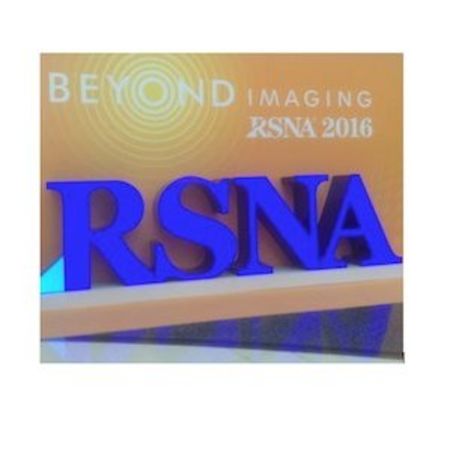In Greek mythology, the centaur was half-human, half-horse. Such a hybrid approach will enable radiologist to harness the power of artificial intelligence, said Keith Dreyer, speaking at the Radiological Society of North America annual scientific meeting in Chicago this week. Dreyer is Vice Chairman of Radiology and Director of the Center for Clinical Data Science, Massachusetts General Hospital (MGH) and Associate Professor of Radiology at the Harvard Medical School.
The Center for Clinical Data Science was set up to take the clinical data generated in the clinical care environment MGH and put it to work in deep learning and artificial intelligence (AI), so that the resulting applications can be fed back into clinical practice and infected back into the workflow. Other large academic centres are also doing this, observed Dreyer. It requires big data, massive computing power, powerful algorithms and broad investments.
With 9 million adults eligible for lung cancer screening in the U.S. under current guidelines, there is great potential for AI applications. Machines can be trained using artificial neural networks on radiologist-interpreted low dose CT scans to use Lung-RADS the imaging reporting and data system. the patient is screened, and using an AI algorithm, the findings can be detected and quanitified.
Like all technology, AI will change radiology both for better or worse, at the same time, said Dreyer. There are always two ways of looking at these changes, he observed. Did PACS and speech recognition ‘ruin radiology’ by turning radiologists into ‘monitor-staring transcriptionists’? Or did it make radiology real time, digital and virtual.
In the information age, radiology is more easily enhanced with AI, automating aspects of radiologists’ jobs that will become essential for participation in precision medicine, population health and quality payment reform. With AI, radiology will have richer information, structured recommendations, quantified findings as well as radiologist intepretation. With these tools, radiologists can create a precision radiology report, compliant with precision medicine.
The radiology environment of the future is the centre of intelligent diagnostic information, said Dreyer. AI will play a significant role in healthcare, with radiology being first.
The Center for Clinical Data Science was set up to take the clinical data generated in the clinical care environment MGH and put it to work in deep learning and artificial intelligence (AI), so that the resulting applications can be fed back into clinical practice and infected back into the workflow. Other large academic centres are also doing this, observed Dreyer. It requires big data, massive computing power, powerful algorithms and broad investments.
AI for Lung Cancer Screening
Dreyer predicted that applications using AI for quantification will probably come in sooner for widespread use than applications for interpretation.With 9 million adults eligible for lung cancer screening in the U.S. under current guidelines, there is great potential for AI applications. Machines can be trained using artificial neural networks on radiologist-interpreted low dose CT scans to use Lung-RADS the imaging reporting and data system. the patient is screened, and using an AI algorithm, the findings can be detected and quanitified.
Like all technology, AI will change radiology both for better or worse, at the same time, said Dreyer. There are always two ways of looking at these changes, he observed. Did PACS and speech recognition ‘ruin radiology’ by turning radiologists into ‘monitor-staring transcriptionists’? Or did it make radiology real time, digital and virtual.
In the information age, radiology is more easily enhanced with AI, automating aspects of radiologists’ jobs that will become essential for participation in precision medicine, population health and quality payment reform. With AI, radiology will have richer information, structured recommendations, quantified findings as well as radiologist intepretation. With these tools, radiologists can create a precision radiology report, compliant with precision medicine.
The radiology environment of the future is the centre of intelligent diagnostic information, said Dreyer. AI will play a significant role in healthcare, with radiology being first.
Road Rules for AI in Radiology
Dreyer offered rules of the road for radiologists in the coming era of AI.- Ask for AI that aguments, not (just automates) - allowing radiologists to provide more value, more efficiently
- Make AI that improves radiology, by making the same procedure deliver more value
- Use AI to expand diagnostic and clinical rules, by using AI to interact with all clinical data, service as the patients’ trusted advisor.
Latest Articles
artificial intelligence, radiology, RSNA16
Artificial intelligence will enable radiology to b the foundation of precision healthcare, says Keith Dreyer, MD, speaking at the Radiological Society of North American annual scientific meeting.



























